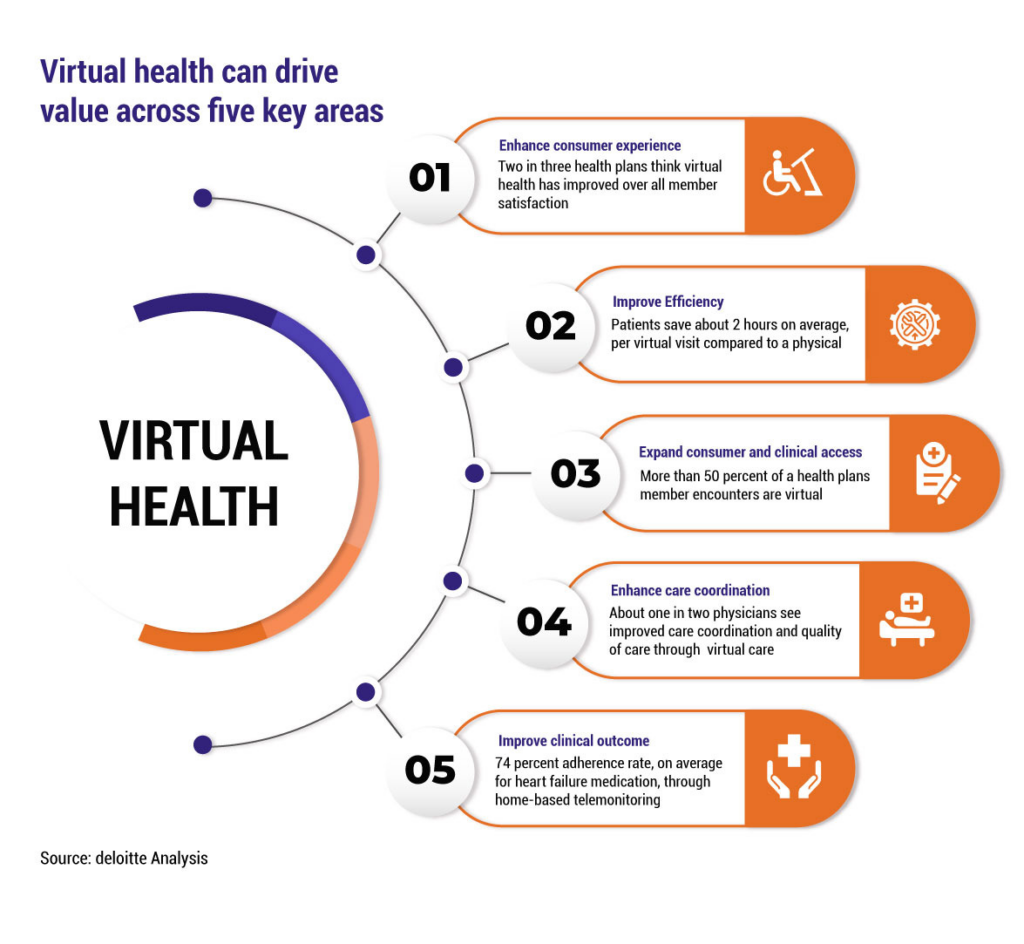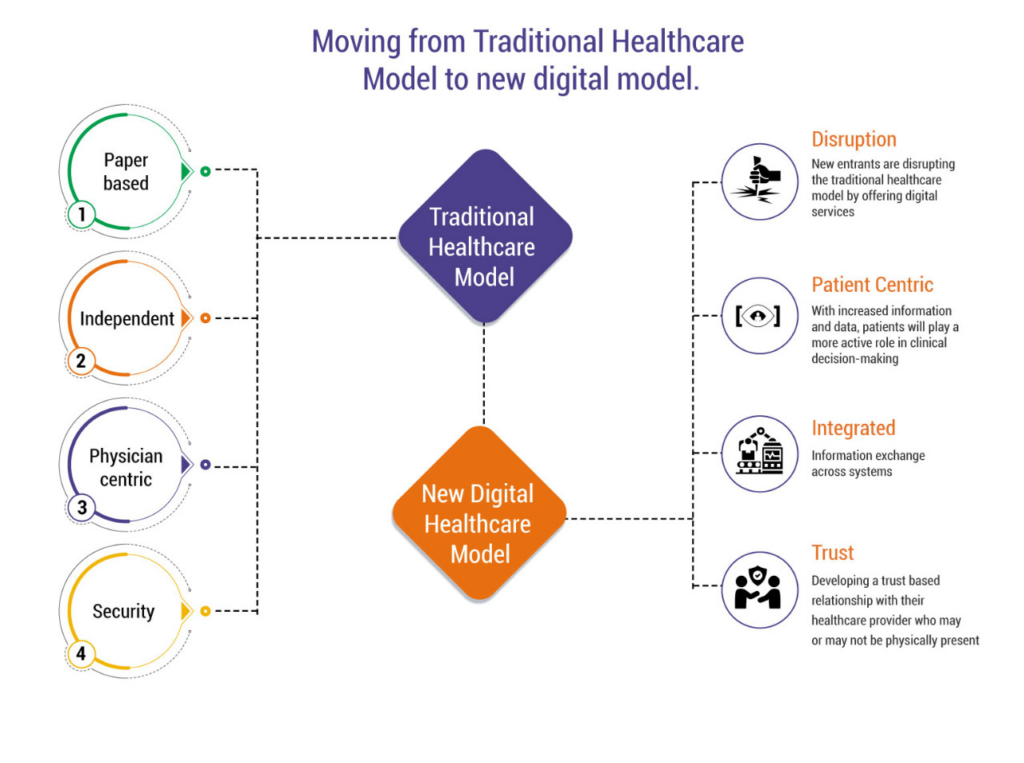
The year 2020 reminded everyone on the planet that ‘health’ matters – above everything else. Suddenly but irreversibly, the spotlight is back on health. People have learned the hard way that there can be no compromise for the time, attention, and resources that need to be spent on health.
In healthcare, the focus is accentuated on factors like accuracy, prediction, prevention and collaboration. As we move forward, consumers and providers would embrace precise, virtual, engaging, cooperative, and instant healthcare. The emphasis on digital forces, data, engagement, anywhere access and personalization will get much stronger in the next few years.
Healthcare- evolves and expands
The global healthcare spending between 2020 and 2024 is expected to rise at a 3.9% CAGR, considerably faster than the 2.8% recorded in 2015–2019 and is expected to reach over $10 trillion by 2024. According to Deloitte’s Healthcare Outlook 2021, global health care spending as a share of GDP will likely remain at around 10.2 percent through 2023. It would be influenced strongly by increased demand for care, labor costs, clinical and technological advances.
What’s remarkable here is,
- Healthcare consumers are expected to show greater engagement and involvement
- They will show more inclination and openness to virtual visits and
- There would be an increase in using technology for health monitoring

Let’s break this down into some specific sub-trends.
Digital healthcare trends, that will stay in 2021 and beyond
- Virtual care
This is a no-brainer. As people continue to exercise caution, and as social distancing becomes a norm, the need for virtual enablement would be crucial for healthcare. Whatever experiments and adoption patients saw during 2020 and first few months of 2021, would continue to gain pace. According to a recent Deloitte Centre for Health Solutions report, almost 65 percent of healthcare providers in Europe have already increased the adoption of digital technologies. And 64 percent have increased adoption towards virtual care and support and better engagement with patients.

As technology gets more and more sophisticated, the penetration of virtual tools would get deeper and deeper.
- Telemedicine
This is an off-shoot of virtual enablement. When healthcare institutions and hospitals of all sizes were busy handling emergency cases and Corona patients, the other parts of healthcare quickly shifted to Telemedicine.

Consultations and diagnosis became possible and turned swiftly on a telemedicine platform. From mental health to child care to skincare – almost every specialty found a savior in the speed and reach that Telemedicine provided. This will continue its traction. The recent Deloitte Health Care Consumer Response to COVID-19 Survey shows that consumers using virtual visits grew from 15 percent to 19 percent between 2019 and 2020, and this number jumped to 28 percent after April 2020. 80 percent of consumers have said they are likely to have virtual visits even in the post-pandemic scenario.
- Telehealth with CX
While technology adoption will continue to rise, providers and solution-makers would have to ensure that they do not compromise on the patient experience. Customer Experience or CX has become a dominant theme for every industry in the age of digitization- more so after the pandemic. An Econsultancy and Adobe Digital Trends 2021 survey has identified some substantial barriers to success in marketing and experience. For ‘mainstream’ CX businesses (those whose CX capability ranged from ‘immature’ to ‘somewhat advanced’), the continued use of legacy systems was voted as the barrier them back from their true potential (43 percent), followed by workflow issues (42 percent) and a lack of digital skills or capabilities (35 percent). This suggests that, despite advances at these companies in 2020, old processes and outdated knowledge continue to hamper efficiency and digital maturity. Healthcare majors and visionary pioneers would have to make sure that they solve this problem to make the best use of tech adoption. - AI-based diagnosis and prognosis
When everything happens in a hybrid-set-up, and when doctors are hard-pressed for time, it is only natural that healthcare embraces automation and analytics rapidly. The speed and accuracy that Artificial Intelligence tools and modern analytics solutions provide is unprecedented.
Patients will become more open and comfortable using these tools – especially bots- before diving into costly and time-heavy consultations with human professionals.
- Care-model revamp
Deloitte’s report stresses that health care organizations around the world are struggling to solve long-pending challenges of affordability, access, quality, and efficiency. These issues cannot be fixed with existing healthcare models.

New models would have to emerge to add speed, agility, and better patient experience across the spectrum. Such advanced models would be supported by a robust digital health ecosystem encompassing various technologies and segments like IoT, SaaS, EHR, EPS, wearables and implantables, tele monitoring, remote consultation and education, 3D printing, precision medicine, predictive modelling and analytics, etc.
Get ready to tap into digital health opportunities
More disruption is expected in the broader health ecosystem as we look for ways to improve diagnosis, care, services, and a better patient and clinician experience. There is a clear sign of widespread adoption of virtual care, new partnerships, new markets, new disruptors, and more. The emphasis on personal health will keep growing. Almost 72 percent of consumers prioritize personal health, and 60 percent of physicians are shifting from current approaches to prevention and well-being. Also, 75 percent of consumers want to work in partnership with providers to reach their healthcare goals.
The next decade would be all about personal healthcare and enhanced collaboration on an industry level for faster research for the cure, vaccines, and predictive healthcare. It’s the perfect time to gain the capabilities to speak a new language. As a professional or entrepreneur, you cannot afford to miss this next big bus. It’s time to build relevant capabilities and tap into promising opportunities in this space.
 India
India  USA
USA 

